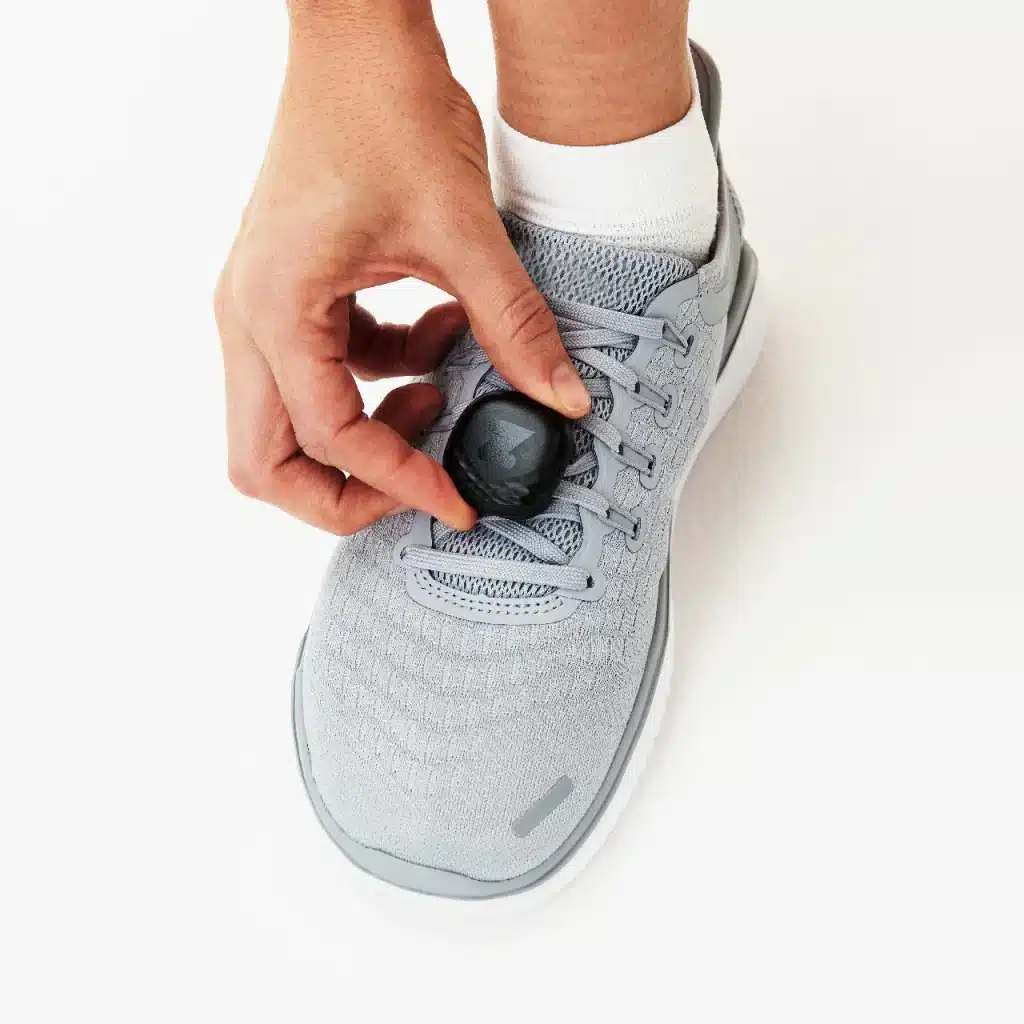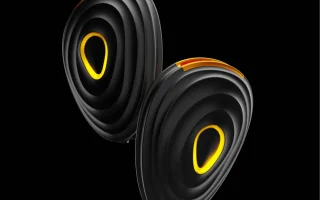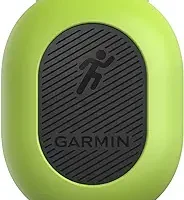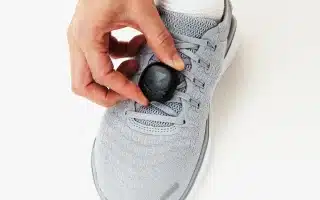When you embark on a journey to improve your running performance, having the right gadgets can be a game-changer. A foot pod is a compact device that attaches to your shoe and provides valuable data to help you assess and enhance your running technique. These devices have come a long way, with the latest advancements providing metrics like cadence, stride length, and even running power.
Choosing the best running foot pod means looking for accuracy, comfort, and compatibility with your existing devices, such as watches or smartphones. The top-of-the-line foot pods not only offer precise tracking of your movements but also integrate seamlessly with various apps and watches, giving you a holistic overview of your performance. Whether you’re a seasoned runner or just starting out, a reliable foot pod can serve as a steadfast partner in your quest for improvement.
As you navigate the market for these indispensable running companions, it’s important to consider what specific metrics you want to track and how the pod’s feedback will influence your training regimen. The right foot pod should empower your runs, providing insights that align with your fitness goals, without intruding on the experience with unnecessary bulk or complexity.
Quick Navigation
Exploring Foot Pods
In the quest for precision in tracking your run data, foot pods are compact, sophisticated devices ensuring accuracy and providing insights in real-time.
Definition and Benefits
Foot pods are small electronic devices that you attach to your footwear. Their primary function is to collect various metrics about your running performance. By utilizing advanced running sensors, a foot pod captures specifics such as cadence, stride length, and overall speed.
- Real-time data: Access to instant feedback allows you to adjust your technique mid-run for better performance.
- Portability: Being exceptionally small, these devices comfortably accompany you on any run without being obtrusive.
- Accuracy: Compared to some wrist-based trackers, foot pods can offer more precise data for your runs due to their placement closer to the point of impact.
How Foot Pods Work
Equipped with accelerometers, gyroscopes, and sometimes GPS, foot pods work by sensing your movements. Once secured to your shoe, each foot pod transmits information to a watch, smartphone, or other display devices, so you have a detailed overview of what your run entails.
- Connection: Devices often sync via Bluetooth or ANT+ for seamless data transfer.
- Spatiotemporal data: They measure how much time your foot is in contact with the ground (ground contact time) and the time between steps (cadence).
Choosing the best foot pod comes down to what data is most important for your training and how you intend to use the insights it provides.
Selecting the Best Running Foot Pod
A reliable foot pod can enhance your running performance by providing detailed data on your workout. Knowing which features are essential and comparing top models will ensure you find the most suitable device.
Key Features to Consider
- Compatibility: Ensure the foot pod pairs seamlessly with your existing smart devices. Whether you’re using a smartphone, sports watch, or compatible devices like the Zwift Runpod, compatibility is crucial for syncing data.
- Accuracy: One of the core reasons to use a foot pod is to get high accuracy data. Devices like the Stryd pod are known for delivering accurate pace and distance metrics. Look for models that consistently provide the best results.

- Ease of Use: You want a foot pod that’s easy to attach to your shoes and sync with your devices.
- Durability: Choose a foot pod designed to withstand the elements, especially if you frequently run outside.
- Battery Life: A long battery life means less frequent charging and more focus on your training.
Comparison of Top Models
Garmin Foot Pod
- Accuracy: Provides good accuracy for pace and distance.

- Compatibility: Works with a range of Garmin devices and other ANT+ compatible watches.
Stryd Pod
- Accuracy: Known for best results with high precision metrics.
- Smart Features: Measures running power in addition to pace and distance.
Zwift Runpod
- Compatibility: Specifically designed for a seamless experience with Zwift’s virtual training environment.

- Cost-Effectiveness: An affordable option for those just entering virtual training platforms.
Choose your foot pod based on these criteria to improve your running experience with accurate data tracking and insights.
Connectivity and Compatibility
When selecting the best running foot pod, ensure it integrates seamlessly with your existing devices and is supported by the running apps you rely on.
Device Integration
Your running foot pod should effortlessly sync with various devices to capture your performance data. For instance, Garmin foot pods are compatible with a range of Garmin watches and devices, offering you a comprehensive tracking experience right on your wrist. If you’re an Apple Watch user, check that the foot pod supports iOS devices; some options like Polar S series sensors connect without hassle. Meanwhile, COROS watches often provide native support for specific pods, ensuring Garmin GPS precision is matched with your foot pod’s data.
- Smartphone Integration: Both Android and iOS users should look for Bluetooth connectivity for a straightforward pair-up with your smart phone via a dedicated mobile app.
- Smart Watch Connectivity: Whether you have a Garmin or Apple Watch, direct communication between your watch and foot pod means no extra gear during your runs.
Running Apps and Software
A variety of apps and software enhance your running experience by analyzing the data your foot pod collects.
- Zwift App: For an engaging virtual running experience, connect your foot pod to the Zwift app to compete in a digital world.
- Connect App: Apps like Garmin’s Connect app offer in-depth analytics and social features to enhance your training.
- Stryd App: Specifically designed for the Stryd power meter foot pod, the Stryd app provides advanced running metrics on both smartphone app and smart watches.
Remember, the compatibility with iOS or Android platforms can significantly impact your training sessions and the ability to analyze data on-the-go. Look for foot pods that offer both ANT+ and Bluetooth capabilities to cover all connectivity bases.
Advanced Metrics and Running Dynamics
When you’re aiming to improve your running performance, understanding advanced metrics and running dynamics through modern technology like running pods can be of immense benefit. These tools measure various aspects of your running form and efficiency, providing valuable insights that weren’t readily accessible just a few years ago.
Power and Efficiency Measures
Your running efficiency is closely linked to your performance, and now, with innovative devices, you can track it in real-time. For instance, a power meter like the Stryd features can accurately measure your running power, a direct indicator of your effort. Unlike traditional metrics such as pace and heart rate, power accounts for external factors like wind and terrain, offering a consistent performance metric. The effectiveness of Footpod power metrics has been evaluated, demonstrating their relation to running economy.
- Power Metric: Measures your energy output, adapting to changes in speed, gradient, and conditions.
- Form Power: Quantifies how much energy contributes to vertical motion rather than forward progress.
Form Analysis and Stride Data
A deep dive into form analysis and stride data can reveal nuances in your running form that could be improved. A device like the Garmin Running Dynamics Pod attaches to your waistband and measures your vertical oscillation and stride length, critical components of your running form. By minimizing excess up-and-down movement, you’re likely to run more efficiently.
- Vertical Oscillation: The bounce in your step; less is generally better for efficiency.
- Stride Length: Key in setting an efficient pace; too long or too short can decrease efficiency.
- Foot Strike: The part of your foot that touches the ground first, which can impact your susceptibility to injuries.
- Leg Spring Stiffness: A measure of how well your body absorbs and utilizes energy with each step.
Devices like the COROS Pod bring different technologies into play, further enhancing your understanding of these metrics. It’s all about data-driven insights for a better running experience.
Training and Performance
Incorporating a foot pod into your training regime equips you with precise data on your running dynamics, allowing for a finely-tuned approach to enhancing your performance. A foot pod offers metrics on your instant pace and average pace, which are vital for both immediate feedback during runs and long-term progress analysis.
Monitoring Progress
To effectively monitor your progress, critical power serves as a robust indicator of your running capabilities. Using a foot pod enables you to track this metric over time. You’ll gauge your running stress balance, ensuring you’re advancing without overtraining. Consider the following:
- Steady Pace: Monitor sustainability over long distances to assess endurance improvements.
- Instant Pace: Evaluate changes in speed and your reaction to running conditions like inclines.
- Time Trial: Use data from periodic time trials to see how your pace sustains under pre-set conditions.
Your foot pod data can be particularly illuminating during a moderate run, revealing subtle shifts in performance that may signify advancements in becoming an efficient runner.
Creating Efficient Training Plans
With insights from your foot pod, you can craft power-based training plans that are calibrated to your target pace and adhere to your desired running stress balance. Here’s a sample structure:
- Baseline Assessment: Establish your current critical power through an initial time trial.
- Target Setting: Define your steady pace for long runs and target pace for high-intensity sessions.
- Plan Formulation: Integrate daily and weekly goals, factoring in weather conditions and recovery.
A foot pod aids in applying structure to your workouts with metrics that inform efficient training plans and align with running conditions. By focusing on data-driven strategies, you’re on a path to continual improvement.
Battery Life and Maintenance
When selecting the best running foot pod, battery life is a key factor. You want a device that can reliably track your runs without frequent charging. Typically, foot pod battery life varies, generally offering anywhere from a few months to a year on a single charge, based on usage.
- Maximizing Battery Longevity: To extend your foot pod’s battery life, sync data regularly to avoid storage overload and turn off the device when not in use.
- Charging Cycles: Foot pods with rechargeable batteries will require periodic charging after certain hours of usage. Familiarize yourself with the charging indicator to optimize charging times.
| Foot Pod Feature | Benefit to You |
|---|---|
| Extended Battery Life | Fewer interruptions in your training schedule. |
| Optimal Data Sampling | Accurate data without excessive power consumption. |
For maintenance, keep your foot pod clean and store it in a moderate temperature. Extreme conditions can negatively affect battery performance and device functionality. Regularly check data points for accuracy, which ensures the device is functioning efficiently, thereby preserving battery life.
Remember to consult the product’s technical manual—such as the one provided by Fraser Island Boat Charters—for specific battery care instructions tailored to your model. Proper care will sustain your foot pod’s operation, letting you focus on improving your running performance rather than device maintenance.
Compatibility With Other Sports Technologies
When exploring the best running foot pod, it’s crucial to consider how it pairs with existing sports technology you may use. Your choice can significantly affect your data syncing and device interoperability.
Complementary Devices
Sports Watches: High compatibility is essential between a running foot pod and sports watches like the Garmin Fenix. When these devices work together seamlessly, you can monitor your performance more accurately.
Chest Straps: Many runners pair their foot pods with chest straps to get a comprehensive view of their physical exertion. A foot pod that supports ANT+ technology will ensure that you can connect it with a variety of chest HR straps for better heart rate data.
Synergy with Wearable Tech
Wearable Fitness Trackers: Your running foot pod should ideally enhance the functionality of wearable fitness trackers. It should not only capture accurate running power but also integrate smoothly, as seen in the interoperability between lifestyle wearables such as Fitbit and sports-specific devices such as Viper POD.
Different Devices: Ensure that the foot pod you select maintains a high level of compatibility with different devices. It should work in conjunction with heart rate monitors, whether they are wrist-based or a chest strap, to compile comprehensive data for your training analysis.
Running Foot Pod Use Cases
Enhancing your running performance and data accuracy during workouts is critical, whether you’re training indoors on a treadmill or traversing outdoor terrains. Running foot pods provide an excellent tool for detailed metric tracking, applicable to varied running scenarios.
Outdoor and Indoor Applications
Running foot pods are versatile devices that cater to both outdoor runs and indoor runs. Outdoors, you can expect precise tracking of your distance and speed, even in areas where GPS signal is weak or unavailable. Your runs through parks, streets, or trails are captured accurately, allowing for detailed post-run analysis.
For indoor sessions, such as treadmill workouts, foot pods are invaluable. They overcome the common issues of treadmill inaccuracy by giving you a closer estimate of your true performance. This is especially helpful for runners focusing on consistent pacing or targeting specific distances, such as a mile run.
Event-Specific Training
When preparing for specific events, the types of runs you engage in could include sprints, endurance runs, or interval training. Each type of run benefits from the metrics a foot pod provides. Sprinters can extract data on their stride rate for performance optimization, while endurance runners might monitor steady-state metrics for pacing during those longer endeavors.
In the context of a mile run, the precise measurement from a foot pod is crucial for pacing strategy and interval training sessions. By understanding your foot strike, cadence, and time on contact with the ground, you adapt your training to meet the demands of your event with confidence.
Practical Insights and Tips
The key to making the most of your running foot pod is understanding how to optimize its use for accurate data and how this can help you in achieving personal bests. This section provides precise steps and methods to ensure you get the best out of your device.
Optimizing Running Foot Pod Use
To ensure your running foot pod provides accurate results, start by calibrating the device correctly. This may seem like a fair bit of work, but accurate calibration is crucial for precise data. Wear the foot pod consistently on the same shoe as placement can affect cadence data.
- Check for Firmware Updates: Ensure your foot pod’s firmware is up to date for the latest features and improvements.
- Secure Placement: Attach it firmly to obtain lower ground contact time and accurate data.
- Calibration: Run on a track or a known distance to calibrate the foot pod for improved accuracy.
Keep in mind that factors like battery life and interference from other motion sensors can impact the data quality, so it’s wise to monitor these aspects closely.
Achieving Personal Bests
A running foot pod can be a great way to track and improve your running performance. Use the device to monitor your strides and work towards lower ground contact time, which often correlates with faster running speeds. Look for patterns in your data to find lots of ups in your performance that you can exploit.
- Set Goals: Use the foot pod to set specific targets for cadence, stride length, and overall speed.
- Track Variations: Running on different terrains can affect your data. Use your foot pod to learn how each surface impacts your performance.
By focusing on a single measure like cadence via your foot pod, you can make much impact on your running efficiency. Regular checks against your personal records can inspire improvements and guide your training regimen.
Economic Considerations
When evaluating the best running foot pod for your needs, understanding the economic aspect is crucial. It’s key to weigh both the initial investment and the long-term benefits related to your running performance and goals.
Cost-Benefit Analysis
When considering a foot pod like the NURVV Run, which offers in-depth running metrics, you should balance the purchase price against the potential for enhancing your training. High-quality gadgets typically demand an extra cost, but this can lead to best results in your performance. By examining metrics such as your average speed, these devices may provide insights that significantly outweigh their upfront cost.
- Upfront Costs: Consider if the initial price aligns with the features offered.
- Performance Gains: Assess whether the foot pod could potentially enhance your running economy and speed.
Long-Term Value
Beyond the purchase price lies the question of durability and ongoing utility. A significant factor in your decision should be whether a foot pod will continue to provide value over time. The longevity of the device, its resistance to wear and tear, and the potential for upgrades or added features contribute to its long-term value.
- Durability: Strong construction means less frequent replacements.
- Feature Updates: Some devices include firmware updates that improve functionality, ensuring your foot pod remains a relevant tool in your training arsenal.
Conclusion
When selecting the best running foot pod, consider your specific needs and preferences. Foot pods offer a range of benefits, from tracking running cadence to estimating speed. Devices like the Stryd Foot Pod have been validated for accuracy in measuring stepping cadence across various intensities, from walking to running.
Your choice may also depend on the conditions in which you plan to run. For instance, in areas where GPS signal is unreliable, a foot pod like the one mentioned in a PLOS ONE study can serve as a reliable alternative for measuring contact time (CT) and predicting running speed.
Key Considerations:
- Accuracy: Look for devices validated by research for precision in gait metrics.
- Compatibility: Ensure the foot pod pairs well with your existing devices or platforms.
- Comfort: Choose a design that doesn’t impede your running form.
- Durability: Consider a foot pod built to withstand your running environment.
Furthermore, if you’re interested in detailed gait analysis, the agreement between the spatiotemporal gait parameters from wearable devices like foot pods and high-speed video analysis indicates that certain foot pods are valid tools for providing insightful data.
In summary, by assessing these factors alongside product reviews and scientific validation, you can find a foot pod that not only fits your running style but also enhances your performance analysis for more informed training decisions.





